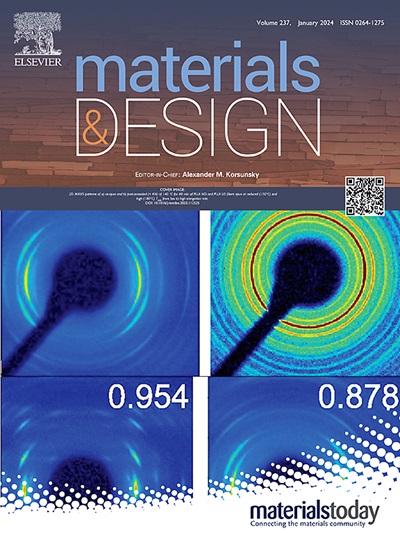Optimizing children's hand orthosis design: A study on contact pressure distribution using FSR sensors
IF 7.6
2区 材料科学
Q1 MATERIALS SCIENCE, MULTIDISCIPLINARY
引用次数: 0
Abstract
The design and comfort of hand orthoses for children are crucial for effective therapeutic outcomes. This research primarily aims to measure the contact force between the hand and orthoses in children under 10 years old and use this data as a loading condition for topology optimization to reduce high-pressure areas, thereby enhancing wear comfort. Force Sensing Resistor (FSR) sensors were employed to record the contact force at 16 specific points on the orthoses using a voltage divider circuit with two different setups: the Teensy 3.5 chip board for 12-bit precision and the Elegoo Mega 2560 chip board for 10-bit precision. These force measurements were compared to existing data from an adult to highlight differences in pressure distribution. Additionally, the study demonstrates the feasibility of integrating precise sensor data into computational models for optimizing medical device designs. While this data could also be utilized in future research for sizing adjustments to optimize the soft padding materials within the orthoses for improved comfort, this aspect is not the primary focus of the current study. The results underscore the importance of developing orthotic designs tailored to pediatric users, informed by precise contact force measurements, to mitigate critical pressure sores and improve overall comfort.

求助全文
约1分钟内获得全文
求助全文
来源期刊

Materials & Design
Engineering-Mechanical Engineering
CiteScore
14.30
自引率
7.10%
发文量
1028
审稿时长
85 days
期刊介绍:
Materials and Design is a multi-disciplinary journal that publishes original research reports, review articles, and express communications. The journal focuses on studying the structure and properties of inorganic and organic materials, advancements in synthesis, processing, characterization, and testing, the design of materials and engineering systems, and their applications in technology. It aims to bring together various aspects of materials science, engineering, physics, and chemistry.
The journal explores themes ranging from materials to design and aims to reveal the connections between natural and artificial materials, as well as experiment and modeling. Manuscripts submitted to Materials and Design should contain elements of discovery and surprise, as they often contribute new insights into the architecture and function of matter.
 求助内容:
求助内容: 应助结果提醒方式:
应助结果提醒方式:


